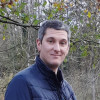Comparison of sequential herbicides applications in sugar beet in Belgium based on active substances analysis.
- Bergiers, G. , Durenne, B. , Weickmans, B. & Huyghebaert, B. (2022). Comparison of sequential herbicides applications in sugar beet in Belgium based on active substances analysis. Poster in: The XVII ESA congress, Potsdam, Germany, 29 August to 2 September 2022.
| Type | Poster |
| Year | 2022 |
| Title | Comparison of sequential herbicides applications in sugar beet in Belgium based on active substances analysis. |
| Event name | The XVII ESA congress |
| Event location | Potsdam, Germany |
| Event date | 29 August to 2 September 2022 |
| Abstract | In Belgian conditions, sugar beet is one of the crops demanding the highest use of plant protection products (PPP). The use of herbicides is particularly crucial to avoid any competition with weeds regarding the plant needs (nutrient, water, light…). Usually, in order to reduce the use of herbicides, agronomic practices must be adapted to allow a substitution of the active substances by mechanical weed control combined with adequate reduced use of herbicides. The low dose chemical weed control system used in Belgium for sugar beet was developed in the 80’s and has become a reference. The principle consists in a sequential application of low doses of the herbicide’s active substances. Most of the applications are a mix of the three main active substances: phenmedipham, ethofumesate and metamitron. The phenmedipham is the main contact foliar herbicide, and is applied with ethofumesate that enlarge the treatment against weeds communities. The metamitron is a root systemic herbicide also used to complete efficacy spectrum and brings remanence to the system. Nowadays many restrictions on the use of other key active substances such as desmedipham and chloridazon have been implemented from European level leading farmers to review their phytosanitary practices which can cause complications for the control of certain weeds. In order to be able to monitor PPP applications at farm level, several indicators have been used such as applied pesticide quantities (kg.ha-1) obtained from farmers surveys or after recording in a database and also the French widespread indicator TFI (Treatment Frequency Index). Nevertheless it was demonstrated that this index implies a systematic bias in the evaluation of active substances used because it takes into account the number of national recommended doses of commercial products applied to each unit of cropped area and averaged across the crop sequence. Therefore, to quantify and compare farming practices related to weed control through herbicides use in sugar beet, a derived unbiased index called ISAC based on active substances per crop has been developed1 and is now applied to compare several weed control strategies. This index links the quantity of active substances applied (g.ha-1) and the maximal authorized doses that can be sprayed per hectare, which is defined at national level. We analyzed some datasets from surveys in Wallonia about usual sequential herbicide treatments. In conclusion the use of the ISAC index allows relevant comparisons between different strategies which can in fine help to propose alternatives for reducing herbicides use in sugar beet. Obviously, it is necessary to investigate how to manage weeds with less or no herbicides in arable farming while maintaining the productivity and therefore take into account agronomic performance such as yield and crop net profit. |
| Fichier | |
| Lien | https://express.converia.de/custom/media/ESA2022/Book_of_Abstract_ESA_2022.pdf |
| Authors | Bergiers, G., Durenne, B., Weickmans, B., Huyghebaert, B. |




